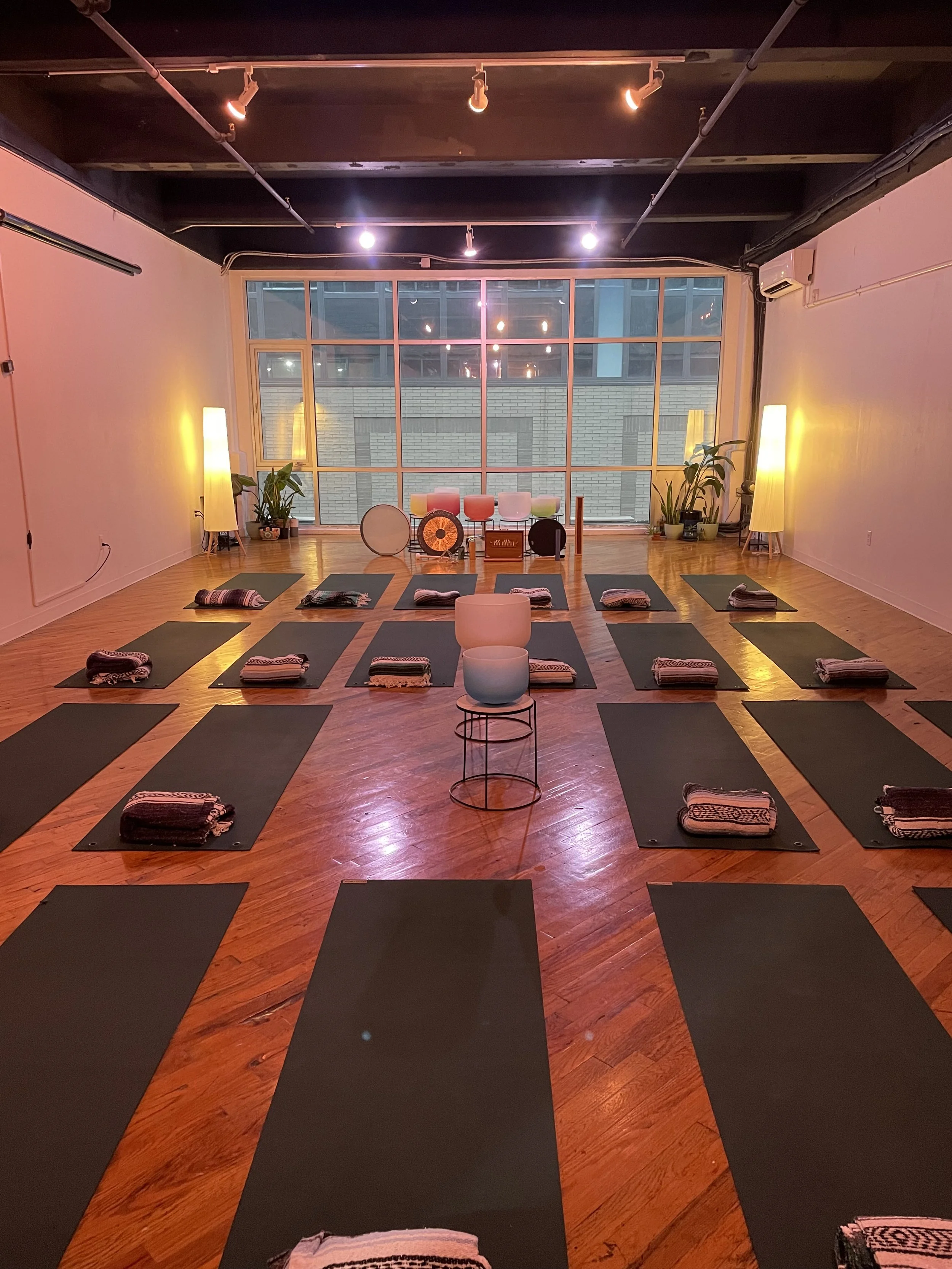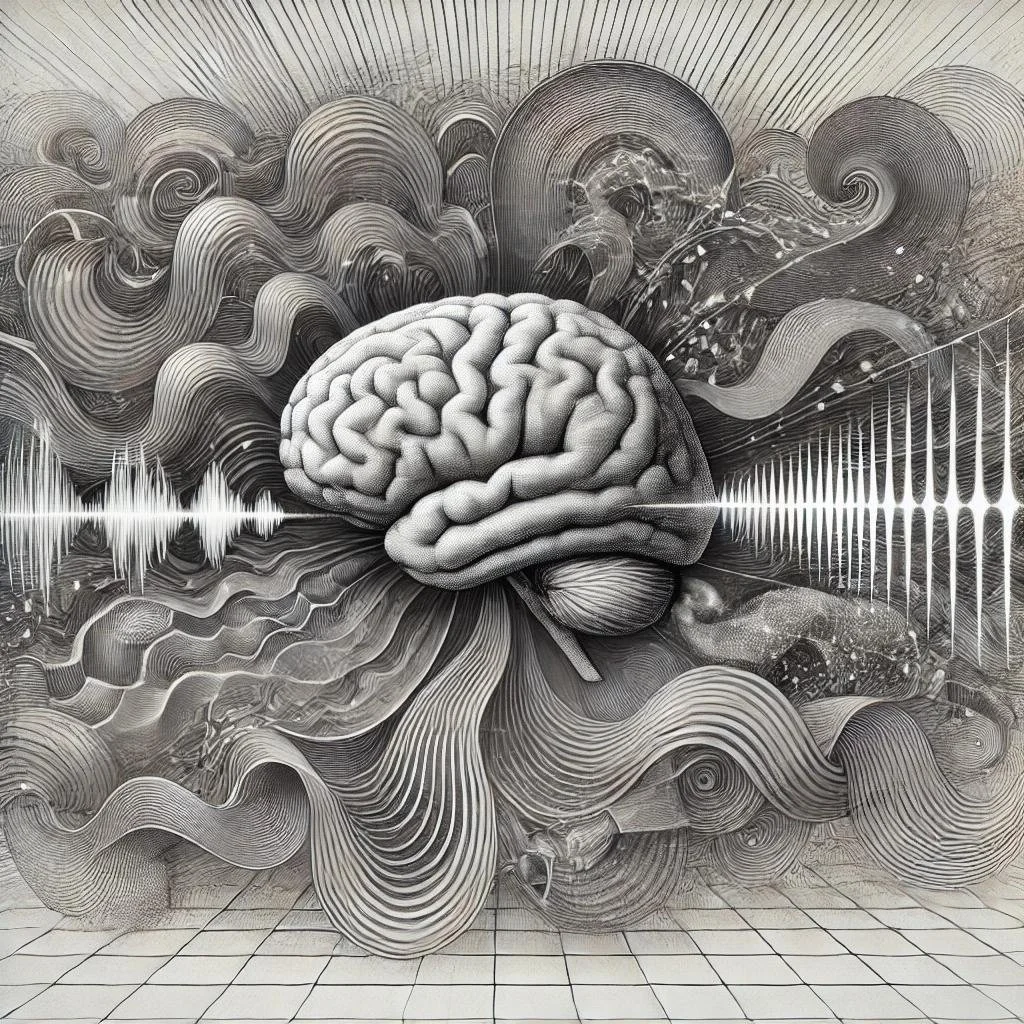Oreka Sound
At the heart of Oreka Therapy & Wellness is the belief that sound and music are powerful mediums for healing, especially when integrated with traditional talk therapy. As a licensed psychotherapist, Board-Certified Music Therapist, pianist, improviser, deep listening practitioner, I bring a unique integrative approach to therapy that goes beyond words.
I’m dedicated to harnessing the transformative power of sound, improvisation, and meditation for healing, connection, and growth. I believe that by applying these practices through community engagement and collaborative initiatives, we can cultivate empathy, compassion and nurture our interconnectedness and shared humanity.
OREKA COMMUNITY SOUND BATH is a 90-minute immersive and restorative experience that uses breath and sound to invite therapeutic effects to the mind and body.
This sound therapy session begins with guided breathing and vocal toning, activating the parasympathetic nervous system and gently preparing participants for deep listening. As we shift our awareness to our auditory senses, our brain waves slow, activating the glymphatic system—the brain’s mechanism for flushing out toxins and waste.
This is followed by a gradual, continuous, and progressive sequence of tonal centers and harmonic shifts using crystal singing bowls and various other instruments. These harmonic shifts of tension and release help guide us into a deeper state of consciousness, where we not only experience profound relaxation but are also inspired to engage in self-inquiry and self-discovery—restoring the mind and body to a state of oreka.
By engaging the parasympathetic nervous system and activating the brain's cleansing mechanisms for a sustained period of time, participants enter a profoundly relaxing and meditative state, feeling recharged and restored to a sense of balance and clarity.
As the sound bath comes to a resolution, participants are guided back to their breath, reconnecting with their bodies and physical awareness, and supported as they integrate and process their experience.
Some immediate benefits may include: improved mood, stress reduction, decreased anxiety, calmness, clarity, creative inspiration, spiritual development, lower blood pressure, better sleep, pain management, and tinnitus relief.
Follow Oreka Sound on Instagram for upcoming Oreka Sound community events, or visit our home page.
Have questions about music therapy and/or sound therapy? Interested in hosting an Oreka Sound event? I’d love hear from you.
Sound Therapy vs. Music Therapy: Understanding the Key Differences
What makes sound and music so transformative, and how do sound therapy and music therapy take different approaches to healing? Before exploring the unique qualities of each, it’s essential to understand the key distinctions in their professional and clinical frameworks. These differences shape how each practice is applied and recognized within the field of wellness and healthcare.
Music therapy is a clinical, evidence-based practice facilitated by board-certified music therapists (MT-BCs) who have completed accredited training, supervised clinical hours, and certification through the Certification Board for Music Therapists (CBMT). It is recognized as a healthcare profession and often integrated into medical, educational, and mental health settings. In contrast, sound therapy is a broader, non-clinical practice that focuses on the therapeutic use of sound frequencies, vibrations, and instruments like singing bowls or gongs to promote relaxation and wellness. Unlike music therapy, sound therapy is not regulated by a governing body, nor does it have state or nationally recognized certification standards, meaning practitioners may vary widely in training, methodology, and scope of practice.
Music therapy is a clinically informed practice that uses music to address physical, emotional, cognitive, and social needs, offering a deeply personalized and interactive approach to healing. While sound therapy primarily focuses on the physiological and vibrational effects of sound—such as calming the nervous system and promoting relaxation—music therapy engages clients more actively in the therapeutic process. Through techniques like improvisation, songwriting, guided listening, and active music-making, music therapy empowers individuals to express emotions, explore their inner world, and build meaningful connections with others.
Unlike sound therapy, which often relies on passive listening, music therapy activates multiple areas of the brain, including those associated with memory, emotion, and self-regulation, enabling clients to access emotions and memories in ways that traditional methods often cannot. This dynamic process fosters self-expression, emotional release, and transformation, providing a safe and creative space for growth. Whether through the spontaneity of improvisation or the structured narrative of songwriting, music therapy promotes mindfulness, resilience, and connection, offering a truly holistic pathway to healing.
Sound therapy is a powerful approach that engages both our auditory senses and physical bodies to promote healing, balance, and transformation. Sound begins its journey through the outer ear, where it is funneled into the ear canal and vibrates the eardrum. These vibrations travel through the middle ear’s tiny bones and into the cochlea, where hair cells translate them into electrical signals sent to the auditory nerve and processed in the brain’s auditory cortex.
Beyond hearing, sound therapy utilizes specific frequencies, rhythms, and tones to engage the nervous system. Low-frequency sounds stimulate the parasympathetic nervous system, promoting relaxation and calm, while higher frequencies energize and focus the mind. Sound also connects directly with the limbic system, the brain’s center for emotion and memory, allowing music and vibrations to evoke powerful emotional responses, symbolic imagery, and unlock deeply stored memories. With an integrative approach to therapy, these emotional responses are integrated into the therapy session for further exploration.
Our bodies are equally responsive to sound vibrations, which resonate deeply within our tissues, bones, and fluids due to the body’s high water content. This physical resonance helps release tension, reduce stress, and promote cellular healing. Vibrations stimulate the vagus nerve and further activate the parasympathetic nervous system, shifting the body into a calm “rest and digest” state, lowering heart rate, reducing blood pressure, and countering the fight-or-flight response.
Sound frequencies also synchronize with the brain’s natural frequencies through a process called entrainment, encouraging states of relaxation, meditation, or restorative sleep. These vibrations can loosen tension stored in the muscles and fascia, releasing both physical and emotional blockages. Additionally, sound therapy influences the endocrine system, boosting the release of serotonin, dopamine, and oxytocin—hormones that promote emotional well-being—while reducing cortisol, the stress hormone.
Have more questions about music therapy and/or sound therapy? Interested in hosting an Oreka Sound event? I’d love hear from you.





